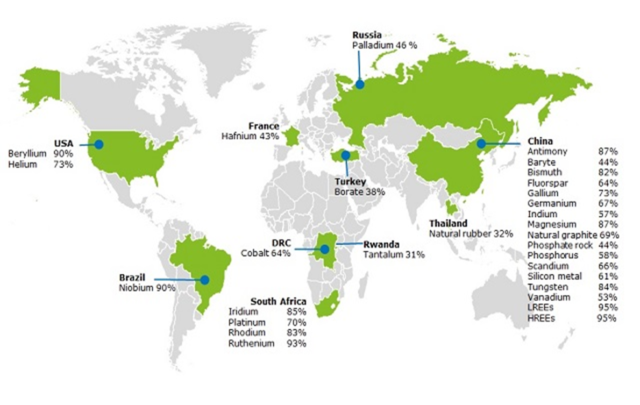Namibia Critical Metals Inc. arose from the concept of creating a mineral resource company dedicated to the exploration and development of a number of critical metals to provide sustainable supplies from a stable mining jurisdiction – Namibia.
“Critical minerals are those that are essential for society and to the economy and whose supply may be disrupted. Demand for many of these minerals has skyrocketed in recent years with the spread of high-tech devices. Today, many critical minerals are metals that are central to high-tech sectors. Demand for critical minerals such as rare earth elements has increased in recent years with the spread of high-tech devices for personal and commercial use such as wind turbines, solar panels, and electronics such as smartphones and tablets.” (from The American Geosciences Institute)
More recently, the definition of a critical mineral has taken on more specific geopolitical connotations as in the United States for example where a “critical mineral,” as defined by Executive Order No. 13817, is a mineral:
(1) identified to be a nonfuel mineral or mineral material essential to the economic and national security of the United States,
(2) from a supply chain that is vulnerable to disruption, and
(3) that serves an essential function in the manufacturing of a product, the absence of which would have substantial consequences for the U.S. economy or national security.
(from Summary of Methodology and Background Information—U.S. Geological Survey Technical Input Document in Response to Secretarial Order No. 3359)
Some selected critical metals and their uses would include:
Rare Earths – permanent magnets, energy storage batteries, phosphors, lasers, imaging, catalysts
Cobalt – Rechargeable batteries, permanent magnets, superalloys
Lithium – Rechargeable batteries, ceramics, and glass
Tantalum – High-temperature alloys, electrical components
Niobium – Superalloys, superconductors
Vanadium – Steel additive/alloys, superconductors

The ‘criticality’ of a mineral changes with time as supply and society’s needs shift. The European Union currently classifies 26 raw materials as critical:

“Securing reliable, sustainable and undistorted access to certain raw materials is of growing concern within the EU and across the globe… These critical raw materials have a high economic importance to the EU combined with a high risk associated with their supply.” (from the Report on Critical Raw Materials for the European Union, May 2014)
China dominates the supply of many critical metals and certain critical metals are sourced from politically unstable jurisdictions.

